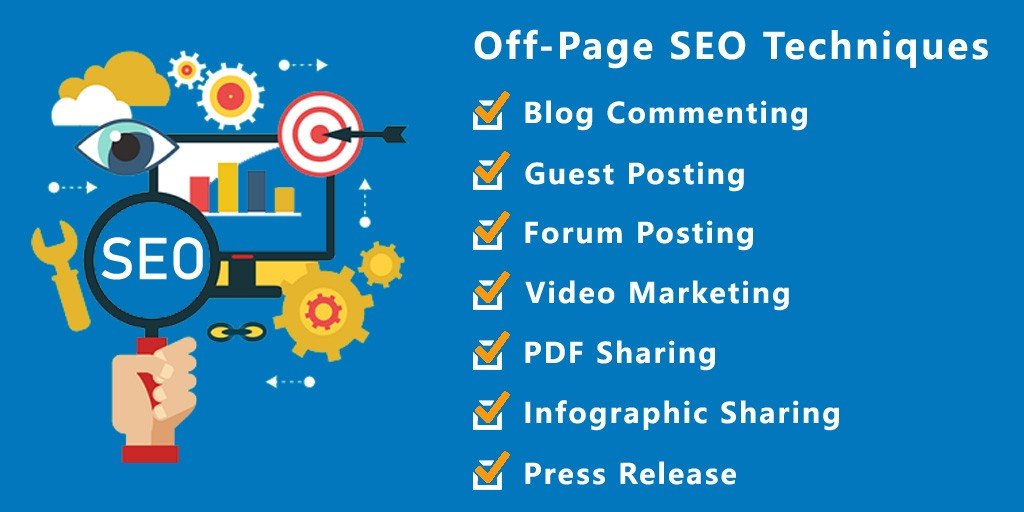In the ever-evolving landscape of digital marketing, search engine optimization (SEO) remains a fundamental pillar for online success. While many may be familiar with the term SEO, understanding the distinction between its two main components—on-page SEO and off-page SEO—is crucial for crafting effective strategies. This article examines the key differences between on-page and off-page SEO, highlighting how they work together to enhance a website’s visibility and authority in search engine results.
What is On-Page SEO?
On-page SEO refers to the optimization techniques applied directly within a website to improve its ranking on search engine results pages (SERPs). This encompasses various elements that content creators and webmasters can control to enhance both user experience and search engine crawlers’ ability to index content. Key aspects of on-page SEO include:
-
Content Quality: High-quality, informative, and relevant content is essential. It should address the needs of your target audience and offer solutions to their queries.
-
Keyword Optimization: Incorporating relevant keywords throughout the content, including titles, headings, and meta descriptions, helps search engines understand the topic and context of the web pages.
-
URL Structure: Clean, descriptive URLs that reflect the page’s content can improve both user experience and search engine indexing.
-
Internal Linking: Strategically linking to other pages within your website aids navigation, enhances user engagement, and spreads link equity across the site.
-
User Experience (UX): Factors like page load speed, mobile-friendliness, and overall site design contribute significantly to on-page SEO. A positive user experience leads to longer dwell times and lower bounce rates.
- Meta Tags: Optimizing title tags and meta descriptions can improve the relevance and attractiveness of web pages in search results, leading to higher click-through rates.
What is Off-Page SEO?
Off-page SEO involves actions taken outside of your own website to impact its trustworthiness and authority. Unlike on-page SEO, these elements are not directly controlled by the site owners. Instead, they focus on building a site’s reputation across the internet. Key components of off-page SEO include:
-
Backlinks: Earning backlinks from reputable websites serves as a vote of confidence regarding the quality and relevance of your content. Search engines view these links as endorsements, which can positively affect rankings.
-
Social Media Engagement: Active participation in social media platforms can increase brand visibility, establish authority, and drive traffic back to the website.
-
Brand Mentions: Creating a recognizable brand that people talk about, even without direct linking, helps in building credibility and trustworthiness.
-
Influencer Outreach: Collaborating with influencers or industry leaders enhances your content’s reach, creating opportunities for backlinks and driving traffic.
- Guest Blogging: Writing articles for other reputable sites allows you to showcase your expertise, driving both referral traffic and valuable backlinks.
Key Differences Between On-Page and Off-Page SEO
While both on-page and off-page SEO aim to improve website rankings and visibility, they differ in various aspects:
| Aspect | On-Page SEO | Off-Page SEO |
|---|---|---|
| Control | Directly controlled by the website owner | Generally outside the owner’s control |
| Primary Focus | Content quality, user experience, and technology | Building authority, reputation, and trustworthiness |
| Measurement | Analytics (e.g., bounce rate, session duration) | Backlink profile, brand mentions, and social signals |
| Immediate Impact | Changes can reflect quickly in SERPs | Improvements take time and depend on external factors |
How On-Page and Off-Page SEO Work Together
On-page and off-page SEO are not isolated strategies; they work synergistically to improve a website’s overall visibility and ranking. Here’s how they support one another:
-
Foundation for Off-Page Efforts: Solid on-page SEO acts as the foundation for off-page activities. If your content is valuable and well-optimized, you’re more likely to earn backlinks and social shares.
-
Improving Authority: High-quality content (on-page) attracts backlinks (off-page) from authoritative sites, which in turn elevates your site’s credibility in the eyes of search engines.
-
Enhanced User Experience: An improved user experience (on-page) encourages visitors to share your content, creating organic backlinks and social mentions (off-page).
- Holistic SEO Strategy: A comprehensive SEO strategy incorporating both on-page and off-page elements ensures a balanced approach to improvement, making your website appear more authoritative and relevant to search engines.
Conclusion
In the competitive digital landscape, understanding the distinctions and interdependencies between on-page and off-page SEO is essential for any website seeking to improve its search engine rankings. By implementing robust on-page strategies to enhance content quality and user experience, and by engaging in off-page activities to build authority and credibility, businesses can unlock their potential to attract more organic traffic. Ultimately, an effective SEO strategy harmonizes both aspects, driving sustainable growth and visibility in an ever-evolving marketplace.
On-Page vs. Off-Page SEO: Key Differences and How They Work Together
On-Page vs. Off-Page SEO: Key Differences and How They Work Together

- Weight Loss Supplements
- https://www.youtube.com/@
WeightLossSupplementsHQ - Health & Wellness
- https://www.youtube.com/@
Health-WellnessHQ - Weight Loss Diets
- https://www.youtube.com/@
WeightLossDietsHQ - Weight Loss Drinks
- https://www.youtube.com/@
WeightLossDrinksHQ - Nagano Tonic Reviews
- https://www.youtube.com/@
NaganoTonicReviewsHQ - Sumatra Slim Belly Tonic Reviews
- https://www.youtube.com/@
SumatraSlimBellyTonicReviewsHQ - Honest Product Reviews
- https://www.youtube.com/@
HonestProductReviewsHQ - Weight Loss & Fitness
- https://www.youtube.com/@
WeightLossFitnessHQ - Dietary Supplements
- https://www.youtube.com/@
DietarySupplementsHQ - Supplements for Weight Loss
- https://www.youtube.com/@
SupplementsforWeightLossHQ - Fat Burner
- https://www.youtube.com/@
FatBurnerHQ

